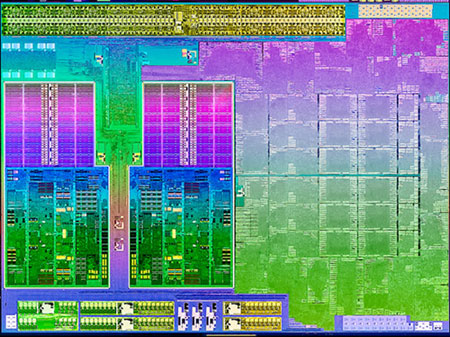We’ll be taking a somewhat different
two-tiered approach with our coverage of AMD’s new Trinity-based APUs
for desktop systems today. AMD is lifting the veil on their new product
line-up, in addition to graphics performance and power consumption, but
we can’t quite give you the full monty just yet, due to a new
multi-tiered launch approach AMD decided to take with these products. If
you want to see how well AMD’s latest desktop APUs overclock, how their
processor cores perform, or how they’re priced, you’re going to have to
stop by in a few more days. For now though, we’ve got graphics
performance and power consumption characteristics to talk about and have
some rather interesting side-by-side comparisons in store as well.

AMD Trinity APU Die Shot
We’ve already shown you what AMD’s Trinity-based APUs can do in their mobile form,
but the desktop variants are somewhat different animals. Although
they’re based on the same piece of silicon, Trinity-based APUs for
desktop systems have much more power and thermal headroom to play with.
As such, the chips are clocked much higher, in regard to both their CPU
and GPU cores. In fact, one of the chips we’ll be showing you here
today, the A10-5800K, can Turbo all the way up to 4.2GHz. Take a look at
desktop Trinity’s main features and specifications below and take a few
minutes to see how the A10’s GPU performs versus an Intel Core i3 in
the video here. We’ll move on to more details and performance data on
the pages ahead.










0 komentar:
Posting Komentar